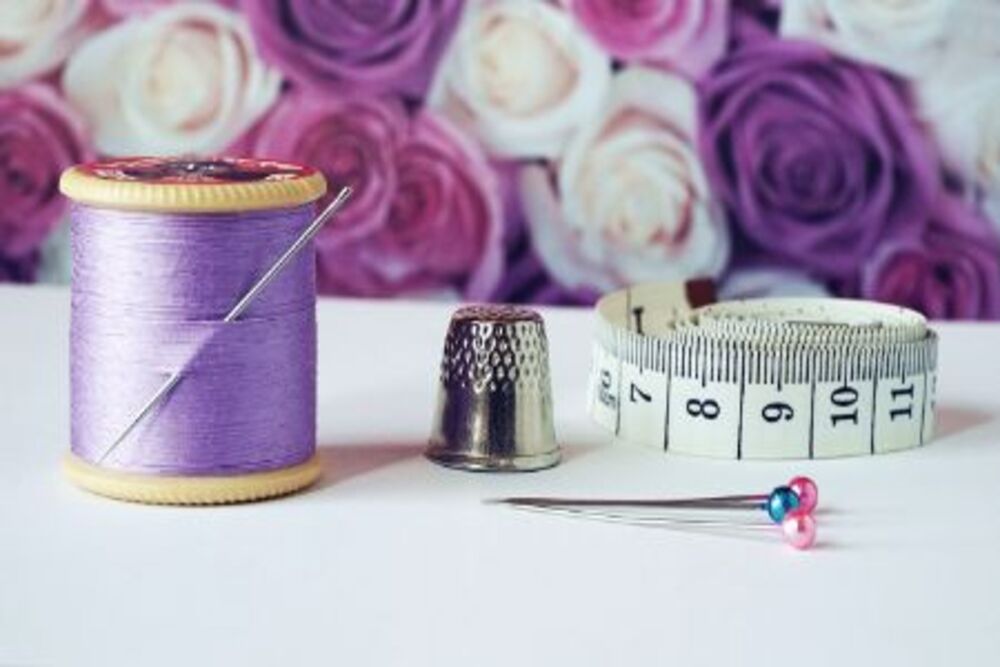Understanding the basic functions of a sewing machine will allow you to use it effectively and make troubleshooting simpler when issues arise. Here are the most frequently used parts and their functions:
Needle plates/throat plates are semicircular discs with holes drilled through them for needle passage. As part of creating stitches, this component plays an integral role.
Threading
Reassembly of both top and bottom threads correctly is essential to sewing, which is known as “threading.” While the exact method varies slightly between machines, generally speaking it should be straightforward and uncomplicated. Please refer to your machine manual for details, however.
Before starting to thread your machine, place a spool of thread onto its thread pin (or spool holder). Now pull it through your U-shaped thread guide, down into one deep groove at the front of the machine. Next bring up through another deep groove just left of where the first was found.
Finally, load a wound bobbin into the little compartment below your needle. Your bobbin should feature an arrow that indicates its proper orientation so it will unspool correctly. Check out for the best sewing and embroidery machine.
Stitching
Sewing machines offer various means of stitching fabric. One such mechanism is known as the drop feed mechanism, which uses a mechanism below the needle plate to push and drag material being sewn around as it travels toward the needle.
Your machine should feature a control knob to help manage how fast it operates; usually this comes in the form of either a foot pedal or operation control button and regulates sewing speed accordingly.
Thread tension dials appear as small numbered sliders alongside markings on a machine or panel and allow users to select their ideal thread tension for any project they are sewing – this allows for neat and accurate stitches, while lock stitches at both the beginning and end of every line of sewing can also be set for secure stitching.
Feeding fabric
A sewing machine’s feed mechanism ensures fabric moves at an appropriate speed while you sew, and prevents twisting, which could otherwise bend or break your needle.
The feeding mechanism consists of teeth on a movable plate called the throat plate that advances fabric during each stitch. It resembles two short bars with diagonal teeth and slots; these bars move forward to grip fabric between themselves and presser foot, up to advance fabric topically and back down again beneath needle plate before returning for next stroke.
An advanced sewing machine features feed dogs that can differentiate top and bottom fabrics, which makes quilting and sewing thicker materials much simpler.
Thread tension
Adjust your thread tension according to the fabric you are sewing on for optimal results. This will enable your top and bottom threads to interlock evenly to form balanced stitches.
At your machine’s face is a numbered dial for fine-tuning the spring-loaded discs through which top thread passes before entering its bobbin case. By tightening or loosening this pressure adjustment knob, tension on top thread can be tightened or released.
A variety of factors, such as thread type and thickness, batting density and fabric density and loft can all influence tension settings for any given project. Polyester threads require the tension dial to be loosed while cotton requires tightening it more – while density and loft can impact stitch balance significantly; dense woven fabrics expose top threads to more friction than looser weave fabrics do.
Troubleshooting
Sewing machines are complex devices containing many gears and mechanical parts; yet, their operation remains relatively straightforward: two kinds of thread are brought together to form stitches.
Skipping stitches is one of the most frequently experienced issues with sewing machines, and may be caused by anything from improper threading to worn needles or low quality needles. In order to ensure optimal sewing machine operation it is also necessary to regularly check feed dogs and bobbin cases for debris accumulation or lint build-up.
Bunched thread can occur above or below fabric, and is more challenging to resolve than skipped stitching; typically indicating tension issues. Rethreading your machine may help, as long as both top and bottom threads match in terms of size and tension.
